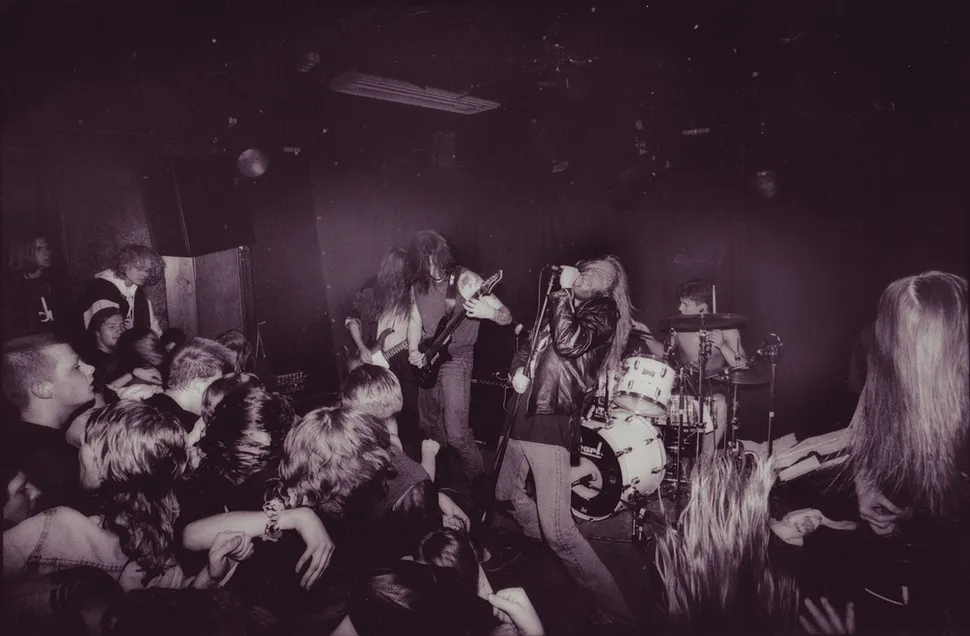Rooted in Fire: The Parallel Origins of In Flames and Dark Tranquillity
Tracing the birth of melodic Death Metal through the genre-shaping debuts of two Swedish icons
In the early 1990s, when Death Metal was still defined by the Floridian grind of bands like Death and Morbid Angel, a quieter, but no less revolutionary, scene was gestating in the cold industrial shadows of Gothenburg, Sweden. There, a small circle of musicians, some friends, some collaborators, some rivals, began fusing the brutality of Death Metal with the melodic sensibility of traditional Heavy Metal. Two bands would emerge as the standard-bearers of this new style: In Flames and Dark Tranquillity. Though they would later become global icons in vastly different ways, their earliest works, “Lunar Strain” (In Flames, 1994) and “Skydancer” (Dark Tranquillity, 1993) are twin documents of a scene on the brink of transformation. Raw, chaotic, and unmistakably innovative, these albums helped spark what would come to be known as Melodic Death Metal, or more specifically, the “Gothenburg Sound.”
Brotherhood and Divergence
What makes this story more compelling is that the bands' early histories are deeply intertwined. Vocalist Anders Fridén, who would become the voice of In Flames for the next 30 years, sang on Dark Tranquillity’s debut, “Skydancer”. Meanwhile, Mikael Stanne, a founding member of Dark Tranquillity, lent his vocals to In Flames’ “Lunar Strain”. It was a moment of overlap before both bands solidified their own directions. The scene was small, studio time was expensive, and gear was often shared. But even then, their personalities were beginning to diverge.
“Skydancer” (Spinefarm Records, 1993)
Dark Tranquillity’s “Skydancer” is a debut album defined by ambition and volatility. At once cerebral and chaotic, it bursts with ideas, some fully formed, others exploratory. There’s a youthful arrogance in its sprawling compositions, with flutes, piano interludes, and acoustic guitars woven into a base of thrashy, Blackened Death Metal.
Tracks like “A Bolt of Blazing Gold” and “Shadow Duet” showcase the band’s early appetite for contrast: ethereal melodies collide with dissonant riffing, and tempo shifts feel sudden, almost reckless. Fridén’s vocal performance is tortured and poetic, closer in tone to Black Metal than traditional death growls. The album’s production is brittle and raw, a limitation of budget, perhaps, but also a contributing factor to its cult appeal. It sounds haunted, like it was recorded in a windswept Nordic attic. “Skydancer” is not an easy listen, but it is an honest one. It captures a band at the height of its youthful experimentation, unafraid to take risks, even at the cost of cohesion.
“Lunar Strain” (Wrong Again Records, 1994)
If “Skydancer” is a storm, “Lunar Strain” is a forge. In Flames’ debut is more concise, more measured, and arguably more immediate in its impact. Where Dark Tranquillity indulged in complexity, In Flames pursued clarity of form without sacrificing intensity. Opening with the now iconic “Behind Space”, the album erupts in twin guitar harmonies, galloping riffs, and tasteful folk elements (the Swedish violin, nyckelharpa, makes a bold appearance in “Clad in Shadows”). Mikael Stanne’s vocals, more guttural than his work with Dark Tranquillity, give the album a brutal edge, even as the melodies soar.
At the core of Lunar Strain is melancholy. Even at its most aggressive, it bleeds emotion. Songs like “Starforsaken” and “Upon an Oaken Throne” reflect a longing that would become a hallmark of the Gothenburg sound. The production is raw but sharp, the compositions tightly focused, and the hooks, yes, even in Death Metal, memorable. Unlike “Skydancer”, which sometimes threatens to collapse under its own weight, Lunar Strain is compact, effective, and genre-defining. It’s a prototype for the sound that In Flames would later take global.
These albums didn’t emerge in isolation. Both bands were influenced by At the Gates, particularly their early work (“The Red in the Sky is Ours”, 1992), as well as the Scandinavian Black Metal scene and British Doom Death acts like Paradise Lost and Anathema. But In Flames and Dark Tranquillity brought something new to the table: a melodic inheritance from classic heavy Metal and a Nordic sense of atmosphere. They made Death Metal emotional without neutering it. They made it poetic without being pretentious.
Though both bands would later diverge stylistically, In Flames toward alternative Metal and stadium-sized choruses; Dark Tranquillity toward progressive, keyboard-driven Death Metal, their debuts remain sacred texts for fans of melodic death.
Legacy and Re-evaluation
Today, “Skydancer” and “Lunar Strain” are viewed with a kind of reverence reserved for flawed masterpieces. They are formative works, not perfect, but vital. More than just blueprints for a genre, they are artistic statements from musicians still finding their voices, still discovering the limits of sound. For longtime fans, they represent The Soul of what Gothenburg Metal once was: icy, introspective, unapologetically raw. For newcomers, they offer a glimpse into a rare musical moment—when Death Metal became beautiful, and melody found a home in the fire.



Comentários
Enviar um comentário